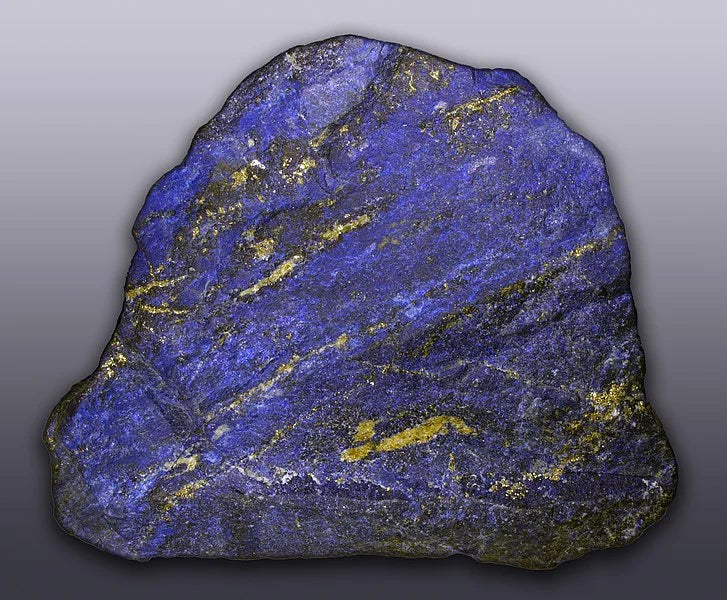
Photo attribution: Hannes Grobe, CC BY-SA 2.5
Lapis Lazuli is arguably one of the most historically important gemstones in the world. Also known as Lapis, it is a gemstone produced from a deep blue metamorphic rock. The two-part name is based on Latin and Persian. Lapis means stone in Latin and Lazuli is a Persian word meaning sky or the stone from heaven. It has been sought after due to both its deep blue color and antiquity. The composition of the rock is mainly lazurite mixed with some other earth minerals. The main source of Lapis Lazuli has been Afghanistan. Mines in Afghanistan single handedly produce most of the rock supplied all over the world but some amounts of rock are also mined in Russia and Chile. This semi-precious stone has a long history that dates back to the 7th millennium BC. It is among the oldest opaque stones that is used till date and has been discovered from various archaeological sites such as settlements of the Indus Valley civilization, Neolithic Burials and the funeral mask of Tutankhamun.
Lapis has been traded throughout the world for more than 6500 years. The stone was exported to South Asian as well as the Mediterranean region using the ancient trade routes established in the 7th millennium BC. A profound use of the stone has been done by several ancient civilization but other than this, it has also been mentioned in several religious scriptures such as the bible. Biblical scholars conclude that several references to sapphire have been made which in reality was Lapis because sapphire was not present in the Middle East at that time. It was only after the Romans that sapphire made it to the middle eastern world.
The most popular use of the stone has been in the death mask of King Tutankhamun but other than this, it was exported to Europe in the Middle Ages where it became an essential raw material for the renaissance art. Lapis was crushed and converted into powdered form to formulate a blue pigment that was used by several popular artist of the century. Additionally, it was also as used as an ingredient for dental tartar by the medieval nuns.
According to Sumerian traditions, the stone represented the sprits of gods and it warded off evil whereas the Egyptians used it to symbolize the deep heavy blue skies above them. Moreover, the stone was used in other forms as well, such as powdered form and was worn as eyeshade. It not only enhances the beauty of the people but was used with the belief that it improved eyesight. All in all, the stone has been seen as a symbolic representation of strength coupled with wisdom, truth and courage. More recently, the stone is believed to have a balancing power and that it can correct a brow chakra. Brow Chakra is an imbalance of blue that leads to headaches, anxiety and disorders of skin. Lapis Lazuli, in the modern world, is considered as a cure to these.

